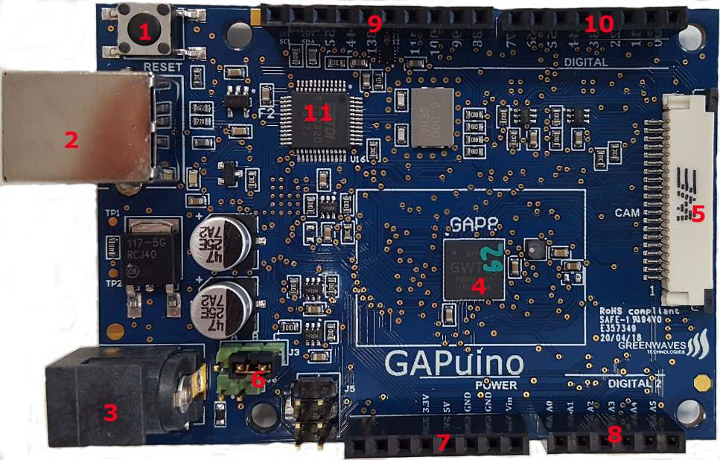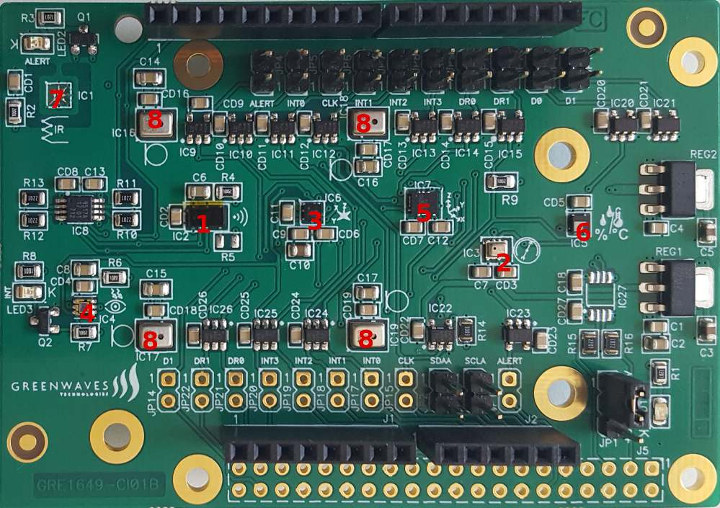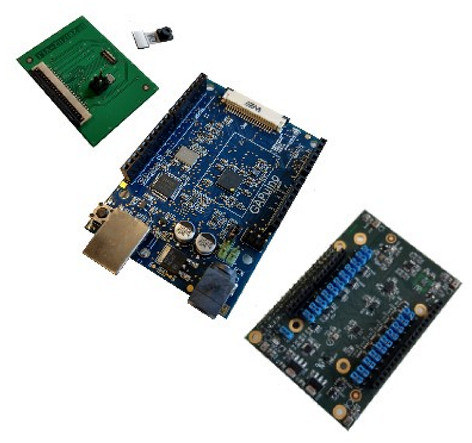GreenWaves GAP8 is a low power RISC-V “MCU class” processor with eight compute cores optimized for artificial intelligence applications, and its main selling point is the ability to do tasks like computer vision or audio processing at very low power, even good enough to run on batteries.
When we first covered GAP8 RISC-V processor at the beginning of the year, the company also mentioned a development kit comprised of GAPDUINO Arduino compatible board, a sensor board, and a QVGA camera module to experiment with the solution. The board and development kit are now easier to purchase as the devkit is sold on SeeedStudio for $229.
- SoC – GAP8 IoT Application Processor with 8x RISC-V compute cores, 1x RISC-V fabric controller core delivering up to 200 MOPS at 1mW and >8 GOPS at a few tens of mW
- Memory / Storage – HyperBus combo DRAM/Flash with 512 Mbit Flash + 64 Mbit DRAM; 256 Mbit Quad SPI flash
- Expansion I/Os
- Arduino Uno compatible master
- Camera connector (5) for external camera (e.g. Himax HM01B0)
- Configurable I/O voltage (3.3V/5V)
- Debugging – USB to GAP8 JTAG + UART
- Misc – Reset button, configuration jumpers
- Power Supply – 7 to 15V via DC connector, or 5V via USB port

The GAPuino multisensor board is an Arduino Uno & Raspberry Pi shield with four MP34DT01 microphones, an STMicro VL53 Time of flight sensor, an IR sensor, a pressure sensor, a light sensor, a temperature & humidity sensor, and a 6-axis accelerometer / gyroscope. The third hardware part of the kit is a low power QVGA camera with a black and white sensor.

Development is done using GAP SDK, and some of the typical use cases include:
- Computer Vision – Object detection, recognition and Ccunting. For example, it can classify a QVGA image every 3 minutes for 10 years on a 3,600 mAh battery.
- Audio Signal Processing -Microphone-array beam forming, noise reduction, echo cancellation and keyword or sentence recognition.
- Machine Health Monitoring – Multi-sensor analysis: vibration, lubrication, electric motor monitoring, infrared tomography, and alignment & balancing…
Beside the aforelinked Github page with the SDK, you’ll find documentation – such as user manuals, schematics, and a getting started guide for the SDK – on GreenWaves website.

Jean-Luc started CNX Software in 2010 as a part-time endeavor, before quitting his job as a software engineering manager, and starting to write daily news, and reviews full time later in 2011.
Support CNX Software! Donate via cryptocurrencies, become a Patron on Patreon, or purchase goods on Amazon or Aliexpress





